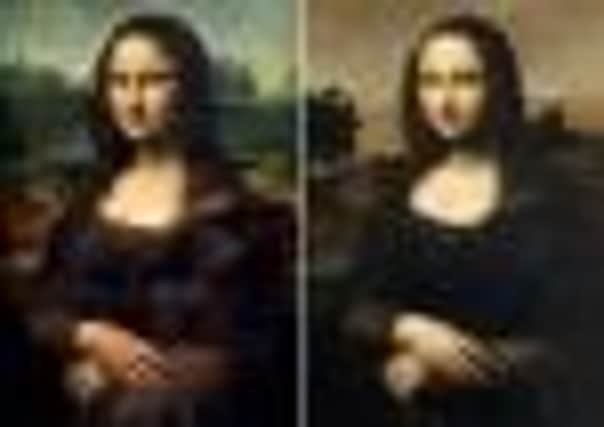‘Early version’ boosts mystery of Mona Lisa


Amid a flurry of flashbulbs, what is claimed to be an earlier version of the Mona Lisa was unveiled in Geneva yesterday. The purported predecessor of the 500-year-old painting, which hangs in the Louvre in Paris, was shown to the media after being held in a bank vault for more than 40 years. The Zurich-based Mona Lisa Foundation insists its claim about the painting, which appears to show a woman ten years younger than the one in the Louvre painting, is based on more than 35 years of research.
The foundation insists it is the same woman, Lisa Gherardini, the wife of a rich Florence silk merchant, but the painting never made it into the possession of the merchant. Instead it was left to an assistant who later sold it to the King of France. It has largely remained in the Louvre since 1789.
Advertisement
Hide AdAdvertisement
Hide AdThe so-called “earlier” painting, known as the Isleworth Mona Lisa, was discovered in the Somerset home of an aristocrat by art collector Hugh Blaker and remained in his family until 1947 when it was sold to American collector Henry Pulitzer. He left it to his girlfriend and after her death it was bought by an unidentified Swiss consortium.
The foundation has published an accompanying book of historical evidence, critical comparison and scientific examination to support its case.
Stanley Feldman, a member of the foundation who is also an art historian, said: “Not one piece of scientific evidence has so far been able to prove that this is not a Leonardo Da Vinci.
“We have investigated this painting from every relevant angle and the accumulated information all points to it being an earlier version of the Giaconda (Mona Lisa) in the Louvre.
“There is always going to be somebody, somewhere, who will dismiss it as a copy.
“We welcome every new discussion and every new piece of evidence that could support this painting, one way or another.”
Robert Meyrick, an expert on Mr Blaker, said: “From the outset, art collector and dealer Blaker believed that he had discovered an earlier version of the Mona Lisa, but did not have the science to prove it. He argued that Mona Lisa (La Giaconda) was originally two separate canvases, but after one went missing, both names were applied to the Louvre painting.”
However, Martin Kemp, art history expert at Oxford University, is convinced it is a copy.
Advertisement
Hide AdAdvertisement
Hide AdHe said: “The Isleworth Mona Lisa mistranslates subtle details of the original, including the sitter’s veil, her hair, the translucent layer of her dress, the structure of the hands.
“The landscape is devoid of atmospheric subtlety. The head, like all other copies, does not capture the profound elusiveness of the original.
“The scientific analysis can at most state that there is nothing to say that this cannot be by Leonardo. The infrared reflectography and X-ray points very strongly to its not being by Leonardo.”
In the 300-page illustrated volume that has been produced by the foundation, Da Vinci expert Alessandro Vezzosi, director of the museum dedicated to the artist in his hometown of Vinci, in central Italy, calls on critics to keep an open mind on the Isleworth Mona Lisa.
He said the book “will permit an unbiased judgment of the claim of this painting to be the earlier portrait, incomplete, of a young Mona Lisa, much younger than that of the Louvre.”